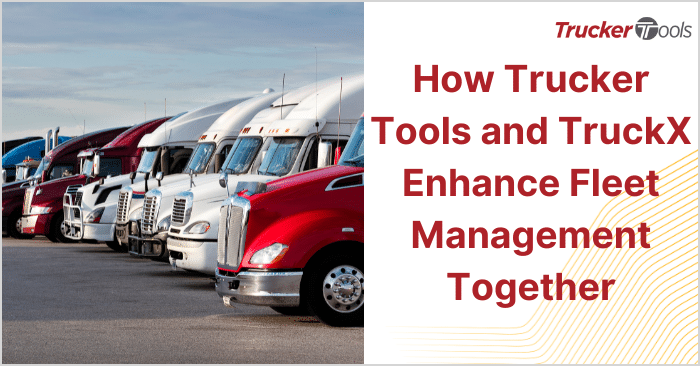Necessity is the mother of invention according to the ancient proverb and that certainly is true when it comes to understanding how technology changes over time. Most technology is invented and/or evolves because there is a practical need for it, as we’ve seen with digital freight matching (DFM) technology in the world of logistics. Digital freight matching technology offers a multitude of benefits to freight brokers and logistics providers and the carriers and drivers with whom they work, the primary benefits being increased efficiency and lower operating costs. In this blog, we’ll do a deep dive into the history of DFM, including why adoption has increased over the last few years and the impact that today’s DFM technology is having on the transportation industry.
How the COVID-19 Pandemic Accelerated the Growth of Digital Freight Matching
Before the COVID-19 pandemic, digital freight matching technology was starting to gain traction with some of the biggest names in transportation, including Uber Freight, Convoy and Amazon. However, digital freight matching tech flew under the radar of many small and medium-sized logistics businesses. When the COVID-19 pandemic hit the United States in the spring of 2020, interest in DFM quickly gained momentum. Here at Trucker Tools, we saw an enormous increase in interest regarding Smart Capacity, our digital freight matching and tracking software platform, and we weren’t alone.
“In 2020, tech adoption that would have taken three to five years got crunched into three months,” Trucker Tools’ Founder and Chief Customer Officer Prasad Gollapalli said. “Everyone had to adapt overnight, whether it was the freight that they moved or their operations. In the later part of that year, the demand for integrations with shipper’s systems and digital freight matching exploded.”
As we settled into life during a pandemic, it became clear that digital freight matching technology could be a game changer for logistics companies. Many in the industry began to recognize that using DFM tech in their operations could reduce operating costs, drive greater efficiency, and empower freight brokers to cover loads faster. At a time when capacity was extremely tight and rates were at all-time highs, DFM could automate some of the most repetitive tasks in a freight brokerage’s operations and let businesses scale without increasing overhead.
Today’s Digital Freight Matching Tech: Benefits for Brokers, 3PLs, Carriers and Drivers
Today’s digital freight matching tech uses the flow of real-time data between freight brokers/3PLs and drivers/carriers to match freight with trucks and trucks with freight. As a freight broker or 3PL, digital freight matching can replace manual capacity sourcing methods such as calling or emailing drivers/carriers or using load boards. Unlike these traditional capacity sourcing methods, DFM technology is real-time, which means when a truck is booked, it’s automatically removed from the DFM marketplace. With a digital freight matching software, freight brokers can locate and secure truck capacity must faster. The software also makes it easy to offer a carrier or owner operator multiple loads in their preferred lanes in a single conversation. DFM increases operational efficiency and makes it easier for freight brokers and 3PLs to not only locate and secure capacity for a single load, but also provides a toolset for bringing drivers and carriers into their core carrier networks for the long-term.
Digital freight matching technology also provides significant benefits to owner operators and carriers. DFM platforms like Trucker Tools’ Smart Capacity digitize rate quotes, rate cons, bids, offers and negotiations for carriers and drivers. Digitization of these communications saves carriers and drivers time and reduces “by hand” manual activities in their operations. They must answer fewer phone calls, email messages and load board messages with DFM. DFM also makes it easier for drivers and carriers to book loads far in advance, easily find and book backhauls, and develop relationships with specific brokers beyond a single load or transaction.
Read “How To Use Digital Freight Matching To Proactively Grow Your Customer Base.” Schedule a free demo of Trucker Tools’ Smart Capacity.






